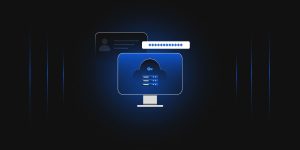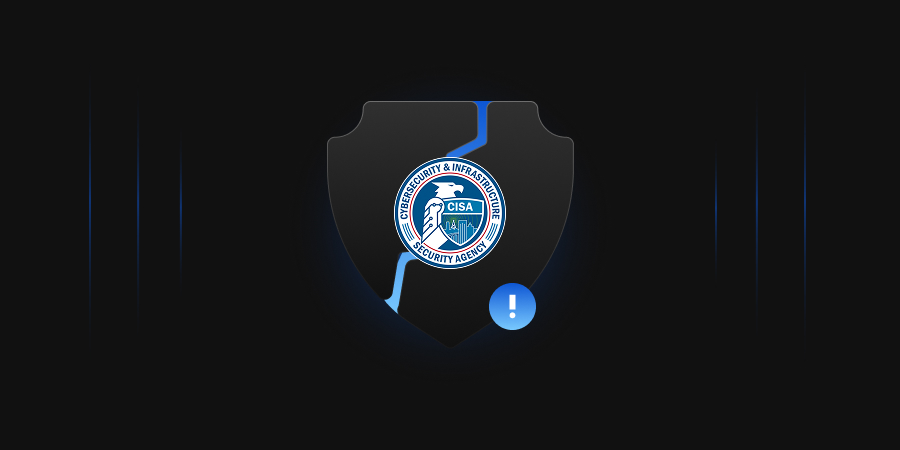Secure Shell (SSH) is a digital beacon in a sea of risks prevalent on bulk information. It’s like having a strong shield coming down from the dangerous parts of the internet. SSH protocol acts as a digital bodyguard for your conversations, and as long as you’re in the digital cosmos, nothing can trace or eventually tamper with your private messages.
SSH keys include Authorized keys and Identity keys, together known as User keys, as they relate to user authentication. Authorized keys are public keys that grant access to a system or resource. They are analogous to locks that can be opened with the corresponding private key. In contrast, Identity keys are private keys that an SSH client uses to authenticate itself when logging into an SSH server. They are analogous to physical keys that can open one or more locks.
However, mastering these keys is not an easy task. Visualize a tool that ensures your digital estate is well-protected by managing a group of precious stones, each of which is unique, and keeping them all safe is so important.
The number one thing in building a strong SSH foundation is to employ good principles, such as using a passphrase in your keys, changing them regularly for new ones, and revoking the access immediately when an incorrect person accesses the keys. To ensure your security, implement these measures to keep your digital domain impenetrable by intruders.
The Importance of SSH Keys and Effective Key Management
The use of SSH keys and strict key management processes is important as this helps keep systems secure from unauthorized access and protects sensitive data. The SSH key is a better choice due to its various security levels, as it utilizes two encryption keys for authentication. Compared to a password, SSH keys are a hard nut to crack in Brute-force attacks and thus enhance security.
Proper SSH key management is the foundation for maintaining access to systems and reducing exposure to unauthorized access. Enterprises can stay ahead by focusing on key passwords and ensuring that users adhere to policy requirements and change their passwords regularly. Thus, enterprises can be safer from catastrophes and data compromise. At the same time, highly regarded security is continuously maintained, and all the regulations are adhered to.
Finally, it is worth noting that the availability of SSH keys and adherence to good practices for key management represent one of the ways to mitigate the exposure of systems and data to cyber threats. By prioritizing SSH key authentication and implementing advanced specialization techniques, organizations can maintain security, reduce the risks involved, and enhance the performance of their services.
Managing SSH Keys
These days, with an increasing number of remote workers, ensuring adequate and secure access to critical machines is crucial. An SSH key acts like a doorkeeper, allowing secure logins to various servers and systems. These keys may be in place for a while, and therefore, their successful storage is of vital importance in addressing upcoming security threats.
To address these challenges and improve security posture, organizations must adopt a comprehensive approach to SSH key management. Below are key best practices aimed at optimizing the security and efficiency of SSH key usage:
-
Discover and Keep Track
You first need to set up a precise audit of SSH keys and their locations within your ever-expanding network. This covers servers, devices, and cloud instances. Maintaining a detailed inventory helps control spending quantities and reduces the complexity of managing situations.
-
Key Monitoring
In this respect, the majority of SSH keys can be assumed to be visible, and their visibility is of utmost importance. Make it central to all your keys and secure them as they are so interconnected. Monitor them to ensure they are properly managed in this way, thereby reducing the risk of misuse.
-
Audit and Breach Prevention
Make it a habit to examine SSH key configurations and their usage. This feature enables the recognition and prevention of breaches where fake or inactive keys may be detected and eliminated.
-
Lifecycle Management
Automate significant lifecycle tasks to reduce manual input and enhance management efficiency. Among these are the necessary corrections, replacements, and withdrawals, the timing of which will be carefully monitored to allow for timely amendments without increasing risks.
-
Compliance and Governance
Implement policies and governance tools to manage access, ensure compliance, and maintain integrity. Group keys according to their functions. A role-based access control system should be implemented. And standards for key generation and rotation must be set up and followed.
-
Strong Keys
Select robust cryptographic methods for key generation, such as RSA or ECDSA, to enhance security and resist attacks on SSH keys.
-
Regular key rotation
Similarly, SSH keys should be rotated at times to protect the system from potential vulnerability. For example, set a schedule of key rotation in place and encode it as a computer-automated code to switch over updates smoothly.
-
Shared Keys
Do not use a private key stored on more than one server to facilitate easier management of keys and for safer usage of a compromised key.
-
Use Passphrases
Create passphrases for SSH keys. This is another parameter to add a security layer. Ask customers to implement compound sentences to hide private keys away from intruders.
Through these processes, you will learn not only to manage your SSH keys but also to implement security controls to reduce risk and thereby secure the assets and applications of your system.
Risks Associated with Unmanaged SSH Keys
The risks of unmanaged SSH keys are numerous and varied, and can result in severe consequences for companies, including data breaches and ultimately, systemic failures of critical infrastructure. Here’s a breakdown of the key risks:
-
The Attacks Exposure
If SSH keys are not properly handled, this can contribute to an increased risk of unauthorized access and abuse. Considering the growing number of keys in circulation, a high risk of keys being stolen or used in cyberattacks is observed. One compromised key can give invaders stealthy and undetected access to the most important systems and the most confidential data.
-
Impact of Compromise
SSH key compromise gives the attackers privileged access to servers, so the confidentiality of the operations can be compromised. The attackers may also use root access to commit malicious activities such as introducing fake data, installing malware, or even destroying systems and incurring huge financial and reputational damage to the organization.
-
Propagation of Attacks
The fact that SSH keys are used simultaneously for multiple servers and systems makes it very easy to initiate a widespread attack. Attackers can use keys they have compromised in order to spread malware or to get access to other systems that are connected. It can cause serious problems to shareholders, and it can also interrupt the operations across the entire organization.
-
Cross-Organizational Risks
The SSH keys used for file transfers between business partners can also be a threat to the company, as they may spread the attacks beyond the organizational boundaries. Wrongly configured connections might give malicious actors a chance to log into partner organizations using the stolen keys, which in turn may ultimately lead to the systems of partner organizations being compromised and more data breaches or disruptions.
-
Cyberwarfare Threats
The abuse of SSH keys raises a serious concern. Coordinated assaults, including the critical infrastructures, meant to halt the operations or to damage them, are real threats.
To sum it up, the risks of not having secure SSH key management practices in place demonstrate the need for proper key management to overcome the vulnerabilities, protect sensitive information, and prevent cyber threats in a modern digital world.
Challenges of SSH Key Management
First, SSH keys are keys for secure remote connections, which, however, cause a great deal of problems when managing them. Here’s the reason:
-
SSH Key Spread
Unlike physical keys, SSH keys do not terminate and, therefore, need to be multidirectional. However, without such central supervision, cybersecurity groups are in a game of catch-up and knock-out with unchecked access and security gaps. Implementing centralized key management solutions can help mitigate these risks by providing visibility and control over SSH key usage across the organization.
-
SSH Key Inactivity
Keys that are old or no longer used are especially desired targets for attackers, but administrators can never know the details about the usage of these keys and the relationships of these keys with others.
Blindly revoking keys without understanding numbers may cause the system to stop operating, and this may lead to downtime and operational disruptions. By implementing monitoring and logging mechanisms, organizations can gain insight into SSH key usage patterns and identify and mitigate potential security risks proactively.
-
Lack of Control
Showing a key simplifies key management, and thus, security control becomes problematic. Along with existing problems, the situation would become more dangerous if the owners of the degraded or obsolete keys were allowed to introduce their systems, which would be based on a centralized single-hosted architecture.
-
Vendor Misconfigurations
Moreover, the possibility of third-party insecure applications being implemented also exists. If these applications were not configured properly, they might be a source of the problem when using SSH keys. IT departments are expected to develop security rules and practices by reviewing processes and conducting wide-ranging auditing and assessment on a routine basis in order to maintain security standards.
-
Lost or Stolen Keys
The biggest security risk involved would be either misplacing or having our private keys stolen or destroyed, which could lead to unauthorized network access and the transfer of a major part of the network.
As an organization, your ability to consistently follow your established protocol shall be strictly ensured. In the event of compromised keys that have been tampered with, the protocol requires immediate deactivation and replacement of the compromised keys, as well as a detailed investigation to determine why the situation occurred and how such situations can be prevented from recurring.
-
Manual Key Lifecycle Management
Using traditional methods to track keys is not an effective way, as it can be very difficult and prone to errors, leading to confusion in large areas. Automation of the core products’ life cycles provides the desired impact by making the workflow process efficient, which in turn helps to lessen human error.
Automating update management and employing scripts helps ensure the continued functionality of updates and maintains the security level at the predetermined level. Additionally, with minimal manual involvement, the workflow is becoming more efficient.
-
Rapid DevOps Adoption
One of the biggest problems that stems from a DevOps environment is the fact that servers are created and destroyed more frequently, and this is where the issue of tracing and maintaining SSH keys begins. The utilization of automation systems that developers are developing is an integral part of the key management processes in SSH, in an environment that is constantly changing.
NIST has guidelines necessary for SSH key management, covering policy establishment, secure implementations, identity control, continuous monitoring, inventory management, process automation, and staff education. The guidelines form the basis of a comprehensive framework for reinforcing SSH key security, with the capability to prevent risks.
Best Practices Aligned with NIST Guidelines and Recommendations
-
Implement Clearly Defined Policies
Establish comprehensive SSH key management policies and procedures to govern the use and access of keys. Clearly defined policies provide a framework for consistent and secure SSH key management practices throughout the organization.
-
Secure SSH Implementations
Ensure secure configurations and proper management of SSH implementations to mitigate vulnerabilities. By regularly updating and patching SSH software and configurations, organizations can reduce the risk of exploitation and unauthorized access.
-
Control SSH Identities
Manage SSH identities and authorized keys to prevent unauthorized access and misuse. Implementing strong access controls and user authentication mechanisms helps prevent unauthorized users from gaining access to sensitive systems and data.
-
Establish Continuous Monitoring
Implement continuous monitoring and audit processes to promptly detect and respond to security incidents. By continuously monitoring SSH key usage and access logs, organizations can identify suspicious activities and take appropriate action to mitigate risks.
-
Inventory and Remediate
Conduct regular inventories of SSH keys and remediate any vulnerabilities or unauthorized access. By maintaining an up-to-date inventory of SSH keys and regularly reviewing access permissions, organizations can identify and address security weaknesses before attackers exploit them.
-
Automate Processes
Utilize automation tools to streamline SSH key management processes and reduce manual effort and errors. Automation helps organizations efficiently manage large numbers of SSH keys and ensure compliance with security policies and regulations.
-
Educate Staff
Provide ongoing education and training to staff members on best practices for SSH key management and security protocols. By raising awareness about the importance of SSH key security and providing training on proper key management procedures, organizations can empower employees to play an active role in safeguarding sensitive information and systems.
Identifying the solution to these hardships implies the application of SSH key administration procedures with automation, visibility, and policy provisions. Although best practices and innovative arrangements are important factors in the process, security can be reinforced and vital resources ensured against threats when organizations start to utilize them.
Conclusion
In the digital era, remote work is increasingly prevalent, and the security of remote systems is therefore of paramount importance. SSH keys are a security feature that enables secure connections with remote systems, and they are just as secure as password authentication.
Still, to ensure safety and security, these digital keys should be used properly to minimize the risks of unauthorized access. For instance, practices such as central visibility, lifecycle automation, and proactive management can help secure this way and safeguard critical data against cyberattacks. This can be achieved by prioritizing SSH key management, which ensures compliance while also reinforcing security.




